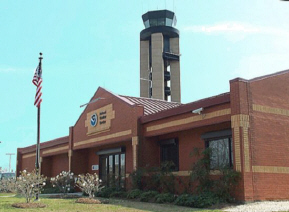Local forecast by
"City, St" |
Search by city or zip code. Press enter or select the go button to submit request |
|

National
Weather Service
Forecast Office
5777 South Aviation Avenue
Charleston, SC 29406-6162
(843) 744-0303
Weather
Office Staff
The Charleston National Weather Service
Forecast Office has forecast and warning responsibilities for portions of Southeastern
South Carolina and Georgia. The office's Doppler Radar is
located in northern Jasper County, SC...in the town of Grays which is about 75 miles
west-southwest of Charleston. Please view the County Warning Area Map for a look at the counties we cover. There are 117 weather
forecast offices with Doppler radar in the United States.
This office provides services such as
public and aviation forecasts, local observations, severe weather warnings, and
NOAA Weather Radio
broadcasts. Public forecasts include short term and
beach forecasts, and weather discussions. We issue a Charleston harbor forecast and
zone and coastal waters forecasts. This office's
Severe weather program includes the issuance of special weather and Hurricane local
statements, and Severe Thunderstorm and Tornado warnings. We are also responsible for
terminal aviation forecasts, and climate data for both the Charleston and
Savannah International Airports.
Office Programs:
Spotter Network-
Our warning program has improved due to advances in
computer technology. Many tasks are now automated at NWS offices. However, even with the
best observing and forecast equipment, a spotter report is useful. An established network
of spotters across our CWA gives a forecaster "ground truth" data that is
compared to what Doppler Radar is showing. A trained weather spotter's report helps
forecasters make a decision to issue a warning in the area that the report was taken. A
weather spotter contacts our office on a special 800 phone line with a severe weather
report that includes a description, location, and time of occurrence. Would you like to
become a SKYWARN Weather Spotter?
Co-op Program-
Our coverage of NWS cooperative observers gives forecasters
a higher concentration of observations in areas where surface data is not received.
Observations include temperature, precipitation, and river stages. Please view our
Cooperative observer site map.
Outreach - mentoring, office tours-
Please contact us during normal business hours Mon.-Fri. if
you would like an office tour (843-554-4851). We normally conduct tours for the 5th grade
and up. Occasionally we give presentations at local schools, businesses, and civic clubs.
- Upper-air Program-
We release a helium-filled weather balloon at 6am and 6pm LST each
day. The balloon carries a small battery powered radiosonde which collects weather data as
it rises to heights of 10 miles above the Earth's surface. When the balloon bursts it has
expanded to the size of a room in a house; a parachute then carries the reusable
instrument back to the surface. Ground equipment at our office tracks a radio frequency
sent by the radiosonde so that we may get a vertical cross section of pressure, humidity,
and temperature measurements. The ground equipment also computes wind speed and direction
at various heights above the surface. This is done by calculating the radiosonde's change
in position with time relative to the ground station. A computer codes the upper air data,
and it is sent to a national supercomputer in Washington, D.C. for input to the forecast
models. With a worldwide network of three dimensional upper air observations, weather
forecasts of temperature, clouds, and precipitation can be produced for periods up to
5-7 days into the future.
|
National Weather Service
Weather Forecast Office Charleston
5777 South Aviation Avenue
Charleston, S.C. 29406-6162
(843) 744-0303
Webmaster: Webmaster
Page last modified: September 22, 2004 |
Disclaimer |
Privacy
Policy |
|


